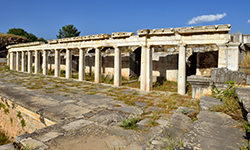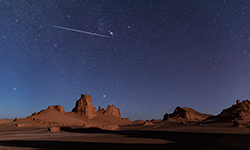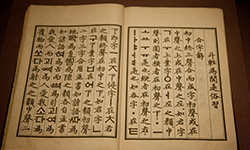
UNESCO World Heritage
The form of the heritage is unique and diverse. From the Serengeti plains of Tanzania in Africa to the pyramids of Egypt, the coral reefs of Australia and the Baroque cathedrals of South America, they are all human heritage.
The special concept of ‘World Heritage’ has emerged because these heritages are of universal value belonging to all mankind regardless of their specific location.
UNESCO adopted the Convention concerning the Protection of the World Cultural and Natural Heritage, abbreviated 'World Heritage Convention' in 1972, in order to discover, protect, and preserve such natural and cultural heritages of universal human value.
 Logo description
Logo description
Definition of World Heritage

Cultural Heritage
- Monument: A heritage of outstanding universal value in terms of history, art, and scholarship among monuments, buildings, commemorative sculptures and paintings, archaeological relics and structures, epigraphs, troglodyte sites, and mixed sites.
- Building Group: A heritage of outstanding universal value in history and art as independent or connected structures
- Historic Sites: A heritage of Outstanding universal value from the point of view of history, aesthetics, ethnology or anthropology in areas including man-made or combination of man-made and natural and archaeological sites.

Natural heritage
Natural heritage is a monument of nature made from inorganic or biological products of outstanding universal value from the point of view of aesthetics or science.
In other words, it is the vegetation area and habitat of geological and physiographic formation, together with endangered species of animals and organisms, especially those of outstanding universal value from the point of view of science, conservation and aesthetics in a certain area, and scientific. A well-delineated natural area or natural site that is of outstanding universal value from the point of view of science, conservation and natural beauty.

Mixed heritage
Mixed heritage is a heritage that meets the characteristics of cultural and natural heritage at the same time.

World record heritage
The world record heritage is a project that UNESCO selects world-worthy documentary heritage every two years since 1997 in order to preserve and utilize valuable records around the world, such as ancient documents. Types of heritage include several movable types of heritages such as books, documents, letters, etc.

Intangible Heritage of Humanity
In accordance with the 2003 UNESCO Convention for the Safeguarding of the Intangible Cultural Heritage of Humanity, the intangible cultural heritage of each country is listed on the Representative List or the Urgent List to maintain cultural diversity and creativity. Until 2005, it was a UNESCO program under the name of Masterpiece of the Oral and Intangible Heritage of Humanity, but now it has developed into an intergovernmental agreement, just like World Heritage.